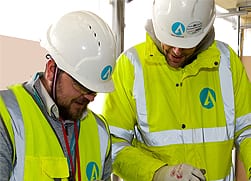Dry Cleanroom Requirements
Pure lithium metal is extremely sensitive to even tiny amounts of moisture in the air, and leads to reduced performance and reliability over the battery life cycle.
With the latest LI chemistries, lithium salts are used to keep the electrolytes stable. In some chemistries, moisture leads to the generation of hydrogen fluoride as an undesired by-product, which leads to gassing and bloating up of Prismatic and Pouch batteries, thereby reducing performance and life expectancy.
Lithium-ion batteries are affected by uncontrolled temperature and humidity during manufacturing stages, in particular electrolyte filling and then battery assembly leading to quality issues around:
- Reduced performance (charging capacity)
- Reduced product lifetime
- Safety issues, including chances of explosion
Lithium-ion battery production, takes place in controlled environment rooms now commonly referred to as ‘dry cleanrooms’ which are hermetically sealed with ultra-low humidity control.
Battery cleanrooms require low humidity (moisture) levels of cleanliness for LI battery manufacturing processing to ensure product quality in terms of yield, reliability, and safety. Energy management and smart design is critical to manage costs.
When there are people present, comfort conditions must be maintained. The average person releases 1500 to 2000 grains per hour through breathing, and perspiration. This must be addressed by the HVAC system. Therefore, modern Giga Battery dry cleanrooms use high levels of robotics and automation.
____________________

Dermot McKenna
Associate Director Business Development
+353 (0) 868135475



